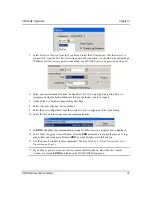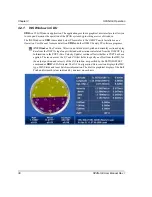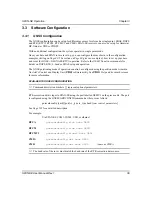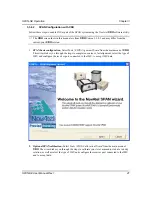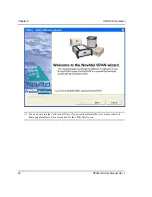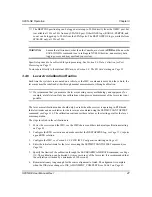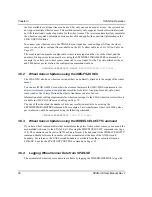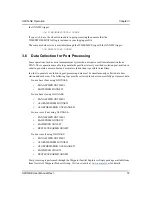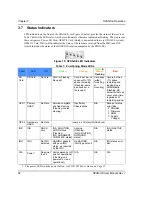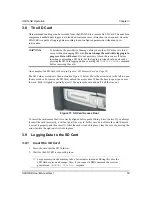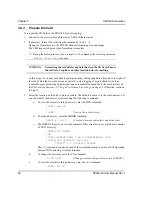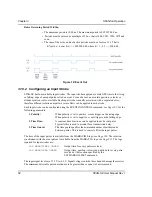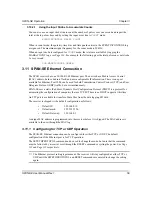
46
SPAN-SE User Manual Rev 1
Chapter 3
SPAN-SE Operation
The kinematic alignment begins when the receiver has a good GNSS position, fine time is solved, the
configuration parameters have been set and a GNSS velocity of at least 1.15 (~4 km/h) m/s is
observed. During kinematic alignment, keep the vehicle roll at less then 10
. Straight line driving is
best.
The accuracy of the initial attitude of the system following the kinematic alignment varies and
depends on the dynamics of the vehicle and the accuracy of the RVB estimates. The attitude accuracy
will converge to within specifications once some motion is observed by the system. This transition
can be observed by monitoring the INS Status field in the INS logs.
3.4.3.3
Manual Alignment
Manually enter the attitude information using the SETINITATTITUDE, or SETINITAZIMUTH,
commands. Details of these commands start on
.
3.4.4
Navigation Mode
Once the alignment routine has successfully completed, SPAN enters navigation mode.
SPAN computes the solution by accumulating velocity and rotation increments from the IMU to
generate position, velocity and attitude. SPAN models system errors by using a Kalman filter. The
GNSS solution, phase observations and automatic zero velocity updates (ZUPTs) provide updates to
the Kalman filter. When a wheel sensor is connected to the system, wheel displacement updates are
also used in the filter.
The attitude is coarsely defined from the initial alignment process, especially in heading. Vehicle
dynamics, specifically turns, stops and starts, allow the system to observe the heading error and allows
the heading accuracy to converge. Three to five changes in heading should be sufficient to resolve the
heading accuracy. The INS Status field changes to INS_SOLUTION_GOOD once convergence is
complete. If the attitude accuracy decreases, the INS Status field changes to
INS_SOLUTION_NOTGOOD. When the accuracy converges again, the INS status continues as
INS_SOLUTION_GOOD.
3.4.5
Data Collection
The INS solution is available in the INS-specific logs with either a standard or short header. As shown
:
Table 6: Solution Parameters
Note that the position, velocity and attitude are available together in the INSPVA and INSPVAS logs.
Parameter
Log
Position
INSPOS
or
INSPOSS
INSPVA
or
INSPVAS
Velocity
INSVEL
or
INSVELS
INSSPD
or
INSSPDS
INSPVA
or
INSPVAS
Attitude
INSATT
or
INSATTS
INSPVA
or
INSPVAS
Solution Uncertainty
INSCOV
or
INSCOVS






